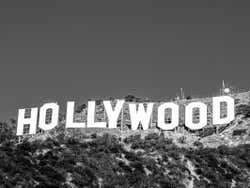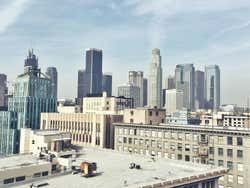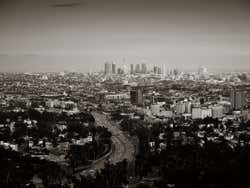
History
Discover the past, present and future of Los Angeles and find out how it's become one of the biggest and most important cities in the United States.
Arrival of the Spanish
Before the Spanish arrived, the area where the city of Los Angeles is located was inhabited by thirty Indian tribes that the Spanish named the apaches navajos.
The first Spaniard to arrive in the area of Los Angeles known as Alta California was Juan Rodríguez Cabrillo, who claimed the land for the state of Crown of Castile on 6th October 1542. Some historians believe, however, it was claimed by Fernando de Alarcón of Extremadura.
Alta California currently belongs to the United States of America, whilst Baja California belongs to Mexico.
Both areas were subsequently populated by Jesuits who founded their famous missions.
In 1767 King Charles III of Spain ordered the expulsion of the Jesuits from his territories.
Two years later, on 2nd August 1769, an expedition led by Gaspar de Portolá, accompanied by the Franciscan monk Juan Crespi, reached Alta California with the aim of expelling the Jesuits and replacing them with Franciscan monks.
In August 1771 Friar Junípero Serra ordered the establishment of the Mission of San Gabriel Arcángel, which today is the metropolitan area of Los Angeles.
On 4th September 1781, the governor Felipe de Neve inaugurated the first settlement with a group of Spaniards, Indians and slaves, which he called El Pueblo de Nuestra Señora la Reina de los Ángeles de Porciúncula (the Town of Our Lady the Queen of the Angels), in honour of the Franciscan Order.
Los Angeles was a Spanish city until 1821, when Mexico gained independence and California fell under the rule of the newly created Mexican nation.
In 1839 Los Angeles underwent a major change when the city became the capital of California.
In 1846 the American John C. Fremont seized Los Angeles from Mexico and, two years later, the Treaty of Guadalupe Hidalgo was signed on 2nd February 1848 which ended the war between Mexico and the United States, and Alta California officially became part of the US.
Gold, Railways and Petroleum
In 1848 James W. Marshall discovered gold in the valley of Coloma, which initiated the 'gold rush' in California and thus rapid growth in Los Angeles.
In 1850 it became officially recognised as a city.
In 1876 the Southern Pacific Railroad reached Los Angeles, as did the Santa Fe Southern Railway in 1885. This caused the city's wealth to increase and boosted orange cultivation.
In 1890 petroleum began to be extracted in California.
20th Century and Hollywood
The rapid growth of the population following the installation of the railway and the discovery of petroleum caused a drought. In order to overcome the problem, Los Angeles began to build the Owens Valley aqueduct in Autumn of 1908, resulting in what is known as the California Water War.
Despite the controversy it caused, the aqueduct was inaugurated in November 1913. Another was also built in the 60s due to another bout of water shortage.
In the 1920s several film studios were set up in the famous neighbourhood of Hollywood, turning LA into the city of stars that it is today.
During the Second World War, Los Angeles became the centre of the American aeronautical industry.
In 1932 and 1984 the Olympic Games were held in Los Angeles.
In 1968 Robert Kennedy was assassinated in Los Angeles.
Los Angeles is one of the most ethnically diverse cities in the United States and has seen a lot of racial conflicts. During the 60s and 70s, there were large-scale race riots and racial unrest. In 1992, the riots following the Rodney King case resulted in the deaths of 60 people.
The city lies on the San Andreas Fault, which causes daily earth tremors. In 1994 the Northridge earthquake hit Los Angeles, resulting in 72 deaths.
Los Angeles Today
Today Los Angeles is the most important city in California. The city is extremely large and the most highly populated in the United States after New York, with over 17,000,000 inhabitants. The economy of Los Angeles lives off the aeronautical, film and tourism industries.
Los Angeles is a popular tourist destination as it has everything a tourist might want, with beaches such as Santa Monica Beach, Malibu Beach, Venice Beach and Long Beach, winter resorts such as Mountain High and Mount Baldy just an hour away, incredible nightlife and is also close to Las Vegas.
Los Angeles has a lot of Spanish colonial architecture and proudly wears the symbols of Castile and León on its coat of arms.


